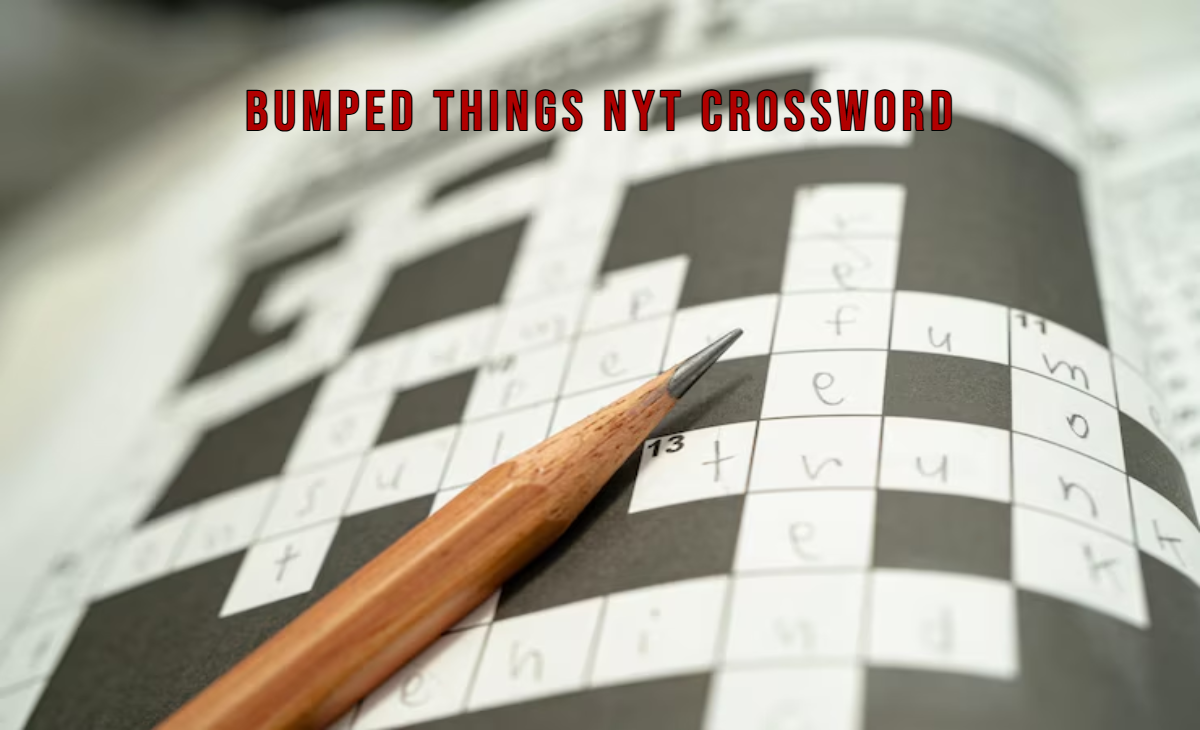The New York Times crossword puzzle is a renowned challenge loved by word enthusiasts worldwide. Among its diverse clues, references to bumped things NYT crossword stand out because they often require solvers to think both literally and figuratively. In the context of the crossword, bumped things can refer to physical impacts like bruises or dents or to figurative notions such as scheduling conflicts or priority changes.
This dual nature of the clues adds a layer of complexity, making the solving process more engaging. While some clues might be straightforward and refer directly to objects with bumps or marks, others may use the idea metaphorically to indicate displacement, delay, or replacement.
The Importance of Context in Bumped Things Clues
One of the most critical aspects of solving puzzles involving bumped things NYT crossword is understanding the context provided by the clue. For example, a clue might read “Bumped things on a car” or “Bumped things in a schedule.” The correct answer depends on whether the clue refers to physical bumps or changes in plans.
You Might Also Like: 185.63.253.300
Without proper context, solvers might guess incorrectly. For a physical clue, common answers include “dents” or “lumps,” whereas for scheduling or event-based clues, answers might be “delays” or “shifts.” The skill lies in interpreting the clue precisely and matching it with intersecting answers in the grid.
Typical Answers to Bumped Things Clues
In many New York Times puzzles, clues referencing bumped things often lead to specific vocabulary words. Understanding these common answers can speed up solving. Words like “lumps,” “dents,” “bumps,” “knocks,” and “dings” frequently appear. Each word has distinct nuances:
-
Lumps: Raised areas on skin or surfaces caused by impact.
-
Dents: Indentations typically on metal or hard surfaces.
-
Bumps: General term for small raised marks.
-
Knocks: Sudden impacts or hits.
-
Dings: Minor dents or scratches.
By knowing these synonyms, solvers can quickly narrow down possibilities when faced with limited letters.
Figurative Use of “Bumped” in NYT Crossword Clues
The New York Times crossword often employs figurative language, making clues about bumped things more complex. The word “bumped” does not always refer to physical impact; it can signify something postponed, replaced, or rescheduled.
For example, a clue might say, “Bumped from the lineup.” The answer could be “axed” or “cut.” Similarly, “Bumped a meeting” might mean “delayed” or “rescheduled.” Recognizing these figurative uses is essential to mastering the puzzle.
How to Approach Bumped Things NYT Crossword Clues
When tackling bumped things NYT crossword clues, solvers should adopt a systematic approach. Begin by examining crossing answers, as they provide crucial letters that reduce guesswork. This strategy helps confirm whether the answer refers to a physical bump or a figurative bump.
Additionally, considering the puzzle’s theme can provide hints. The NYT often groups related clues around a theme, which can help pinpoint the right meaning of “bumped.” For instance, in a puzzle themed around cars, bumped things likely refer to dents or dings.
The Role of Wordplay in Bumped Things Clues
Wordplay is a hallmark of the New York Times crossword, and clues about bumped things are no exception. Puzzles may use puns, homophones, or double meanings to increase difficulty. For instance, a clue like “Bumped things that might leave a mark” could cleverly hint at both “lumps” (physical) and “slaps” (figurative).
Such dual-meaning clues encourage solvers to think creatively and consider multiple interpretations before finalizing their answers.
Examples of Bumped Things Clues in NYT Crossword
Consider the clue “Bumped things that appear after a fall.” The likely answer is “lumps,” referring to the swelling caused by impact. Another clue might be “Bumped things on a car,” where “dents” fits perfectly. A figurative clue such as “Bumped from the schedule” might lead to “delays” or “canceled.”
By studying these examples, solvers can familiarize themselves with common phrases and answers related to bumped things.
The Challenge of Ambiguity in Bumped Things Clues
One challenge with bumped things NYT crossword clues is ambiguity. Because the word “bumped” can apply to both tangible and intangible objects or concepts, the solver must carefully weigh options. Without adequate crossing letters, making a guess can be risky.
This ambiguity is intentional, as it adds an enjoyable layer of complexity to the puzzle. It encourages solvers to expand their vocabulary and think beyond the obvious, which enhances overall puzzle-solving skills.
Tools and Resources for Solving Bumped Things Clues
Many crossword enthusiasts use online dictionaries, thesauruses, and crossword solver tools to help with challenging clues, including those related to bumped things. These resources provide synonyms, related phrases, and possible word fits based on the number of letters.
Using these tools responsibly can assist solvers in learning new words and improving their solving speed without spoiling the fun of discovery.
Why Bumped Things Clues Are Enjoyed by Solvers
Clues involving bumped things resonate with solvers because they blend everyday experiences with clever language. Everyone can relate to bumps, dents, or being bumped from plans, which makes these clues accessible yet challenging.
Moreover, such clues often demand a balanced mix of literal and figurative understanding, sharpening both vocabulary and critical thinking skills. This blend makes the NYT crossword a stimulating mental exercise.
Conclusion: Mastering Bumped Things NYT Crossword Clues
The phrase bumped things NYT crossword covers a fascinating array of clues ranging from physical impacts like lumps and dents to figurative ideas such as delays and cancellations. Successfully solving these clues requires attention to detail, understanding of context, and an appreciation of wordplay.
By familiarizing yourself with common answers and meanings, analyzing crossing entries carefully, and thinking creatively about figurative uses, you can improve your ability to crack bumped things clues. The New York Times crossword continues to challenge and delight solvers by weaving everyday concepts into its intricate puzzles, and bumped things clues are a prime example of this clever craftsmanship.

